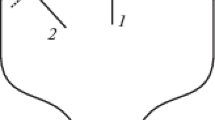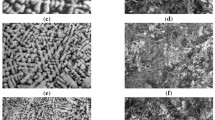Abstract
Results are presented from a study of the mechanical characteristics and microstructure of rails made at the Novokuznetsk Metallurgical Combine from steel alloyed with manganese, silicon, chromium, molybdenum, and vanadium. It was established that obtaining high strength and hardness in the steel by increasing its contents of carbon and alloying elements has an adverse effect on the service properties of rails made of steels with a bainitic structure. Normalizing is the most effective means of increasing strength and improving microstructure. The required level of mechanical characteristics can be obtained by tempering the steel at 350–370°C. The adverse effect of cold straightening-which is manifest in a reduction in the rails’s impact toughness-can be offset by subjecting the steel to preliminary tempering or normalizing and tempering. Rather than further increasing the strength of rail steel to improve its overall quality, this objective is better served by making sure that the steel is cleanly made, that the rails have little or no curvature, and that the residual stresses in the steel are favorably distributed.
Similar content being viewed by others
Author information
Authors and Affiliations
Additional information
__________
Translated from Metallurg, No. 4, pp. 51–53, April, 2007.
Rights and permissions
About this article
Cite this article
Pavlov, V.V., Godik, L.A., Korneva, L.V. et al. Railroad rails made of bainitic steel. Metallurgist 51, 209–212 (2007). https://doi.org/10.1007/s11015-007-0039-8
Issue Date:
DOI: https://doi.org/10.1007/s11015-007-0039-8




